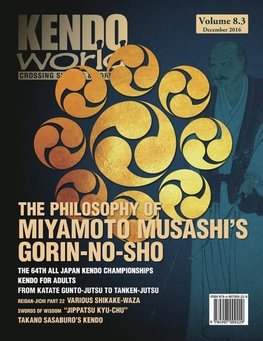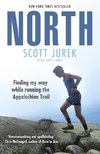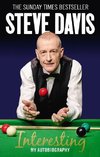
-
 Anglický jazyk
Anglický jazyk
Kendo World 8.3
Autor: Alexander Bennett
Editorial: Letting Go…
By Alex Bennett
In this editorial, Alex describes the importance of "letting go" in keiko. In Japanese this is described by the word "sutemi", which literally means "discarding the body"....
Viac o knihe
Na objednávku, dodanie 2-4 týždne
33.10 €
O knihe
Editorial: Letting Go…
By Alex Bennett
In this editorial, Alex describes the importance of "letting go" in keiko. In Japanese this is described by the word "sutemi", which literally means "discarding the body". The key to kendo improvement is sutemi, throwing yourself into every attack.
The 64th All Japan Kendo Championships
By Michael Ishimatsu-Prime
A report on the 64th All Japan Kendo Championships which was won by Kanagawa's Katsumi Yosuke.
Kendo as Music; Music as Kendo
By J. Michael Sills
Kendoka and guitarist J. Michael Sills explores the similarities between kendo and music and how they have helped him in his study of both. Perhaps the greatest similarity between kendo and music is rhythm, and if you can ascertain your opponent's rhythm, you should be able to find an opening to attack.
Uncle Kotay's Kendo Korner - Part3: The Three Initiatives
By Uncle Kotay
Kendo sage Uncle Kotay dishes out more kendo wisdom, the likes of which us mere mortals can hardly fathom. In this installment he talks about the three types of "sen": sen-no-sen, sen-sen-no-sen, and go-no-sen.
The Philosophy of Gorin-no-sho: Part 1
By Uozumi Takashi
Translated by Jeff Broderick
Martial arts scholar Uozumi Takashi of the Open University of Japan examines the philosophical underpinnings of perhaps the most-famed martial arts text ever written. "Although Miyamoto Musashi is extremely famous as a swordsman, for a long time, details of his actual life were not well known. It would also be very difficult to say that the aim and overall meaning of his Gorin-no-sho has been well understood. I have been working to shed light on Musashi's ideology by examining five of his writings and his Gorin-no-sho, along with a re-examination of various materials from the Edo period that capture the true figure of Musashi in the historical context of that era. Previously, I have authored Miyamoto Musashi-The Path of the Japanese (2002), The Annotated Gorin-no-sho (2005), and Miyamoto Musashi: Living the Martial Path (2008). Building on these works, I would like to consider here Musashi's philosophy based on his life and experiences and also his aims in writing the Gorin-no-sho."
Kendo for Adults Part 5: The Importance of Kakari-geiko for Adults By Hatano Toshio Translated by Alex Bennett In this issue, Hatano-sensei explains the importance of kakari-geiko and its benefits. "There are two objectives in kakari-geiko: the first is building stamina, especially in school-aged kenshi; the second is to learn to strike without using excessive strength. The latter is the most important reason. When you are completely exhausted and have little strength left in your arms and shoulders, this is when you make the best cuts because you are striking with a minimum amount of power. You need to remember this feeling. Striving to maintain correct posture and form as you go will help perfect your striking, and lead to executing attacks that are relaxed, accurate, and decisive. Start energetically, and finish energetically. That is the only way to do kakari-geiko."
From Katate Gunto-jutsu to Tanken-jutsu: The Birth of Tankendo
By Baptiste Tavernier
Kendo World's resident jukendo and tankendo expert, Baptiste Tavernier, explores the historical beginnings of tankendo in this article...
- Vydavateľstvo: Bunkasha International
- Rok vydania: 2016
- Formát: Paperback
- Rozmer: 280 x 216 mm
- Jazyk: Anglický jazyk
- ISBN: 9784907009229


 Nemecký jazyk
Nemecký jazyk 








